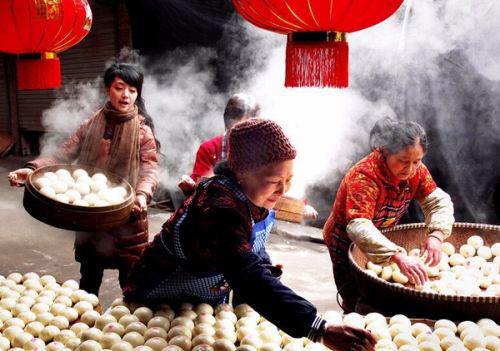Introduction to Shaanxi

Provincial capital: Xi’an City
Address of the general office of the provincial government: Xincheng Yard, Xincheng District, Xi’an
Zip code: 710006
Telephone no. of the provincial government: 029-87292341, 87292357
Website of the provincial government: http://www.shaanxi.gov.cn
Shaanxi has a time-honored history. It is a major birthplace of Chinese civilization. In ancient times, it was the location of Yongzhou and Lianghzou, as well as the native place of Yan Emperor and the burial place of Yellow Emperor. In early years of the Western Zhou Dynasty, King Cheng of Zhou took Shanyuan as the boundary. The western Shanyuan was controlled by Zhaogong. The descendants therefore named the western Shanyuan as “Shaanxi”.

Location & Area
Shaanxi Province is called “Shan” or “Qin” for short. It is in the heartland of China, located at 105°29′-111°15′E and 31°42′-39°35′N. It borders Shanxi and Henan in the east. It connects with Ningxia and Gansu in the west. It reaches Sichuan, Chongqing and Hubei in the south. and it borders Inner Mongolia in the north. It is a vital region linking eastern China, central China as well as northwest and southwest. China’s geodetic origin is located in Yongle Town, Jingyang County, Shaanxi Province. Its total area amounts to 205,800 square kilometers.

Demographic statistics
At the end of 2015, it has a permanent resident population of 37.9287 million. The male population amounts to 19.5814 million, accounting for 51.63%. The female population amounts to 18.3473 million, accounting for 48.37%.

Tourism resources
Shaanxi is one of major birthplaces of the Chinese nation and Chinese civilization. More than 10 dynasties founded a capital here, such as the Zhou Dynasty, Qin Dynasty, Han Dynasty, and Tang Dynasty. It now has 35,800 cultural relic sites, 151 museums, 900,000 pieces (sets) of collections. There are 72 tombs of ancient emperors, including Famen Temple (a famous temple of Buddhism), Louguantai (a holy land of Taoism), and Daci’en Pagoda (a pagoda for Tang Monk to translate Buddhist texts and teach classics). Moreover, it has Xi’an City Wall, the largest and best-preserved ancient city wall in China.


